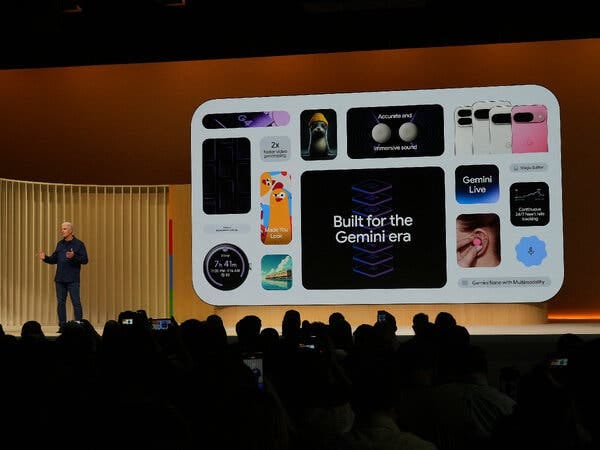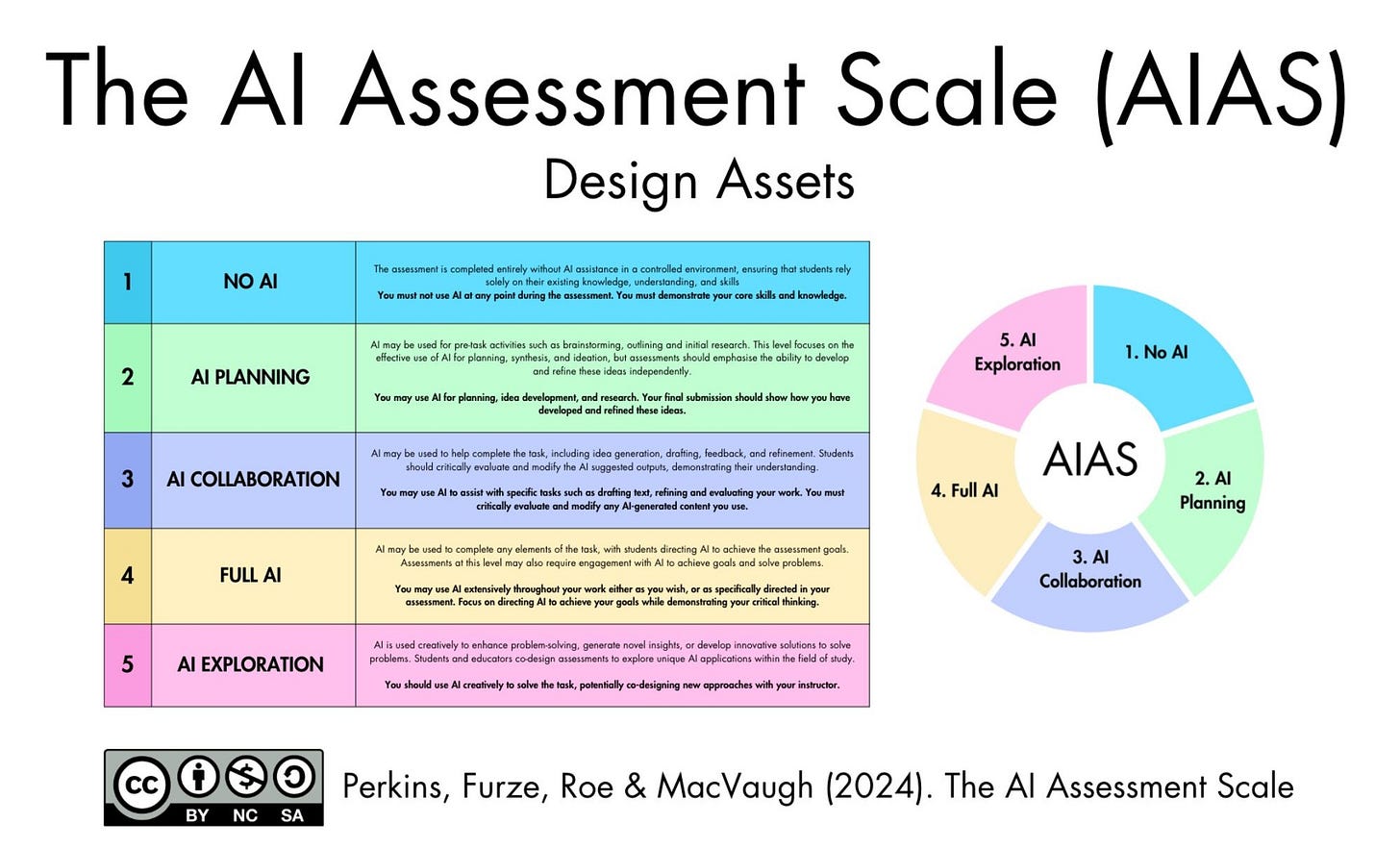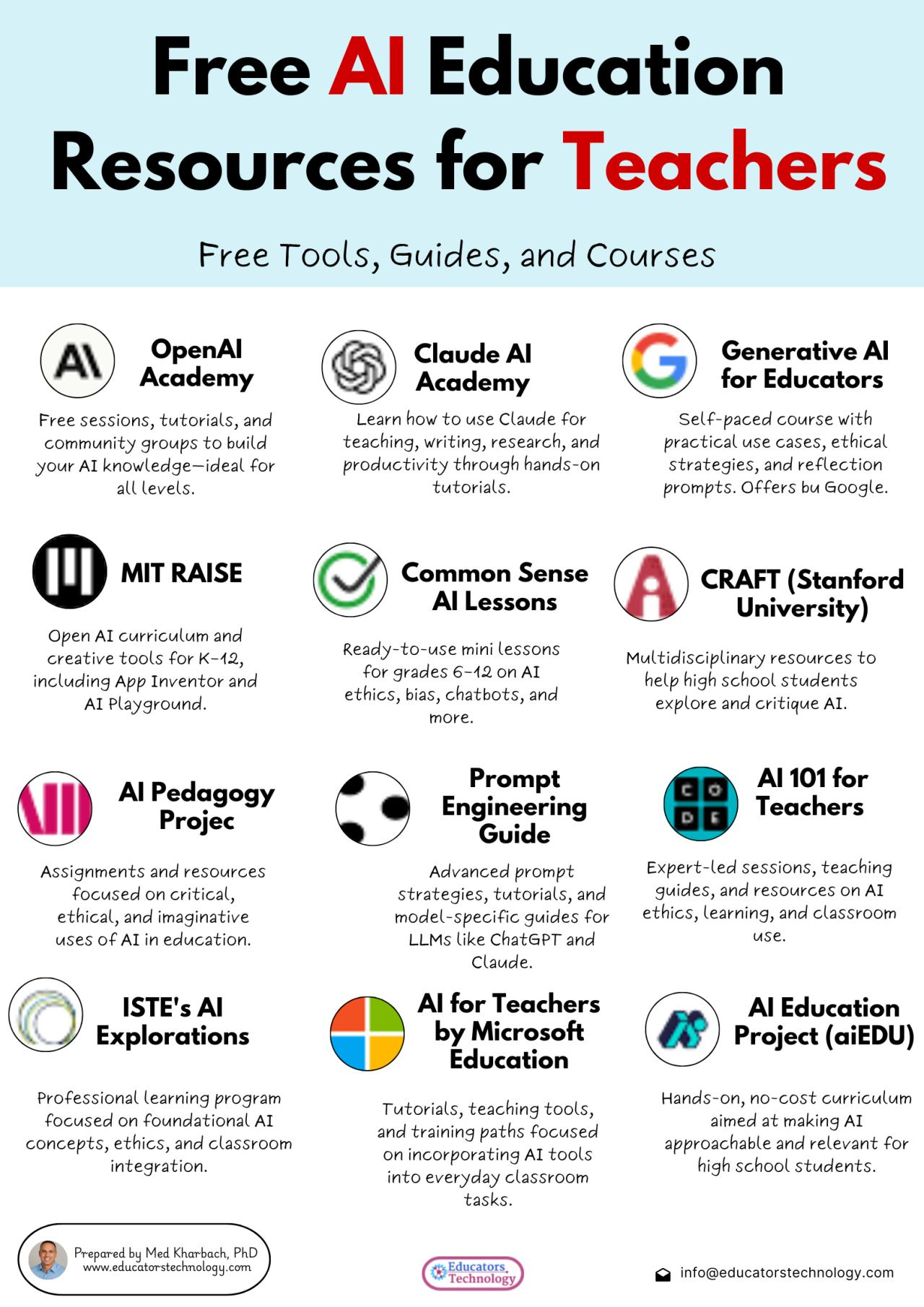⚡️ Project-Based Learning with AI
Supercharge learning with hands-on, real-world projects enhanced by AI
This past week, over 250 CEOs, including leaders from Microsoft, Salesforce, and Uber, signed an open letter in The New York Times calling for artificial intelligence and computer science to become core components of K-12 curricula.
This call to action comes as research highlights that taking just one computer science class in high school can lead to an 8% increase in wages, regardless of career path or whether they attend college. When scaled across the country, it could unlock $660 billion in economic potential annually for Americans.
Yet the U.S. risks falling behind. Countries like Brazil, China, South Korea, and Singapore have already made computer science or AI education mandatory for all students. In contrast, American schools remain without a consistent, nationwide standard. As the open letter urges, “In the age of AI, we must prepare our children for the future—to be AI creators, not just consumers.”
The takeaway? A strong future in tech starts with rethinking how we prepare students today. In this newsletter, we explore how project-based learning can help prepare students for an AI-driven future.
Here is an overview of today’s newsletter:
Upcoming AI x Education webinar featuring project-based learning
Resources to learn more about project-based learning
Meta-analysis of 51 studies examining the impact of ChatGPT on student learning
A conversation with Johnny Chang, founder of AI x Education
⭐️ AI x Education Webinar Series
📢 Upcoming Webinars
AI and the Art of Learning: Project-Based Pedagogy for the Future
Friday, May 30 | 1:00 – 2:00 PM PDT
As AI transforms how we work and create, it also challenges us to rethink how we teach. What if, rather than replacing human learning, AI could help us return to what makes it meaningful: curiosity, creativity, and connection?
Join us for a thought-provoking conversation at the intersection of AI, education, and the arts. This session spotlights project-based learning as a powerful framework for helping students thrive in an AI-enhanced world. Whether you're an educator, school leader, or lifelong learner, you'll leave with new inspiration for designing hands-on, human-centered learning experiences.
In this webinar, you’ll discover:
Practical ways educators are using AI to support student-led projects and inquiry
How creativity, experimentation, and purpose can flourish in an AI-enabled classroom
Strategies for co-designing learning with students using ethical, human-first approaches
Featured Speakers:
Jorge Costa – Professor, ASU & Grammy-nominated engineer: Bridging music, learning, and emerging tech
Dan Be Kim – Edtech researcher, Harvard’s Berkman Klein Center: Developing AI fluency and moral imagination
Ginger Love Garcia – English Language Arts Teacher & AI Literacy Advocate, International School of Boston
Guest Co-Host: Tara Mandrekar – Associate Director, Ourmedia: Building equitable, AI-ready learning-to-career pathways
Join the conversation and help shape a future of learning that is both intelligent and deeply human.
✅ Takeaways from Our Recent AI x Education Webinars
In our recent webinar, “Practical AI Toolkit for Busy Educators,” Rebecca Bultsma delivered a highly actionable guide to integrating AI into teaching with zero fluff. She outlined how educators can save hours using AI for admin tasks (like drafting emails or summarizing documents), enhance lesson planning, and personalize student engagement through tools like ChatGPT, Claude AI, and Notebook LM.
Key strategies include:
Use the "Oreo Strategy" → Start and finish tasks with AI, but rely on your own expertise in the middle
Try structured prompting (persona, task, context, format) to get better results.
Explore GPT mini-apps for lesson design, feedback, and student analogies.
Addressing challenges in AI-influenced assessment, with practical alternatives like live writing and AI critique assignments.
Keep pedagogy in the driver’s seat and focusing on what AI can’t do—build relationships and emotional insight.
🚀 Practical AI Usage and Policies
💡 Topic of the Week: Project-Based Learning
As generative AI becomes more accessible, education is shifting from a focus on what students passively absorb to a why paradigm rooted in active construction, creative problem-solving, and exploration. This shift highlights the growing value of project-based learning, which offers meaningful contexts for developing skills and fostering engagement.
Generative AI can serve as a powerful support tool in these environments, helping students navigate ambiguity, iterate on ideas, and take greater ownership of their learning. By integrating these technologies thoughtfully, educators can meet the evolving needs of today’s learners while evolving their own roles from information providers to mentors as well. Below are some resources to learn more about project-based learning:
Tips for Using AI, From Grad Students and Professors (Harvard Graduate School of Education)
AI and the Case for Project-Based Teaching (The Chronicle of Higher Education)
Generative AI in Student-Directed Projects: Advice and Inspiration (Creative Computing Lab - Harvard Graduate School of Education)
The Next Wave: Artificial Intelligence in Project-Based Learning at WPI (Worcester Polytechnic Institute)
👩💻 Helpful Resources for Educators
This AI Assessment Scale (AIAS) was developed by Mike Perkins, Leon Furze, Jasper Roe, and Jason MacVaugh to provide a nuanced framework for integrating AI into educational assessments.
Med Kharbach, PhD, created a visual of free AI education tools, guides, and courses that teachers can use to stay updated on the latest developments and ideas to incorporate AI into the classroom.
📖 Interesting Reads
AI Shows Racial Bias When Grading Essays — and Can’t Tell Good Writing From Bad (74 Million)
What Happens When Teachers Are Replaced With AI? This School Is Finding Out (Newsweek)
Everyone Is Cheating Their Way Through College (New York Magazine)
🎥 Videos to Watch
What is the Future of Education? Freakonomics’ Steve Levitt & Google Chief Technologist Ben Gomes (Google)
The AI generation: Balancing technology and socialization in education (Brookings)
📝 Latest Research in AI + Education
Looking Beyond the Hype: Understanding the Effects of AI on Learning
Key Takeaways:
The authors propose the ISAR model to categorize four types of AI effects on learning: inversion, substitution, augmentation, and redefinition.
Inversion effects occur when AI, despite being intended to support learning, instead leads to reduced cognitive processing and diminished learning outcomes, counteracting the intended benefits. This can happen, for example, when learners over-rely on AI tools like ChatGPT, leading to shallower processing or "metacognitive laziness".
Substitution effects happen when AI provides instruction that is equivalent to non-AI alternatives without changing the depth of learners' cognitive processing or directly altering learning outcomes.
Augmentation effects occur when AI enhances instruction by providing additional cognitive learning support compared to a non-AI alternative.
Redefinition effects occur when AI transforms learning tasks to foster deeper (constructive or interactive) learning
The ISAR model emphasizes how the impact of AI on learning depends on its instructional use. While it can substitute, augment, or redefine learning in meaningful ways, poor implementation risks inversion effects that reduce cognitive engagement and ultimately undermine learning.
Bauer, E., Greiff, S., Graesser, A.C. et al. Looking Beyond the Hype: Understanding the Effects of AI on Learning. Educ Psychol Rev 37, 45 (2025). https://doi.org/10.1007/s10648-025-10020-8The effect of ChatGPT on students’ learning performance, learning perception, and higher-order thinking: insights from a meta-analysis
Key Takeaways:
This meta-analysis of 51 studies examines the impact of ChatGPT on student learning as highlighted below.
ChatGPT has a large positive impact on improving learning performance and a moderately positive impact on enhancing learning perception and fostering higher-order thinking.
The impact of ChatGPT on learning performance is significantly influenced by the type of course, learning model, and duration. It showed the strongest effect in skills and competencies development courses, when applied in problem-based learning, and when used for 4–8 weeks.
The effect of ChatGPT on the development of higher-order thinking is moderated by the type of course and the role played by ChatGPT. It had a large positive effect in STEM and related courses and was most effective when acting as an intelligent tutor.
Wang, J., Fan, W. The effect of ChatGPT on students’ learning performance, learning perception, and higher-order thinking: insights from a meta-analysis. Humanit Soc Sci Commun 12, 621 (2025). https://doi.org/10.1057/s41599-025-04787-y📰 In the News
The New York Times
Google Plans to Roll Out Its A.I. Chatbot to Children Under 13 ↗️
Key takeaways:
Google is preparing to roll out its Gemini AI chatbot to users under the age of 13 who have parent-supervised accounts set up through its Family Link platform.
The company has stated that it will not use data from children with Family Link accounts who interact with Gemini to train its AI systems.
To help ensure safety, Google says Gemini will include special protections designed for younger users, aimed at minimizing exposure to harmful content. However, in a message to parents, Google acknowledged that the system isn’t foolproof, noting that “Gemini can make mistakes” and that children might still come across material parents would find inappropriate.
Organizations such as UNICEF and various children’s advocacy groups have expressed concern, warning that AI tools can mislead or manipulate young users, who may have difficulty distinguishing between human and machine responses. They also highlighted the broader risks of generative AI producing harmful or misleading content.

Entrepreneur Middle East
UAE to Make AI Official Subject in Schools ↗️
Key Takeaways:
Starting in the 2025–2026 academic year, the UAE Ministry of Education will officially introduce artificial intelligence as a subject across public schools from kindergarten through Grade 12.
The program will cover seven key areas: foundational concepts, data and algorithms, software use, ethical awareness, real-world applications, innovation and project design, and policies and community engagement.
In Cycle 1, students will explore how machines compare to humans, develop digital reasoning skills, and learn basic uses of AI. Cycle 2 will focus on designing and assessing AI systems, understanding algorithmic bias, and promoting responsible use of AI. In Cycle 3, the curriculum aims to equip students for university and future careers through command engineering training and hands-on simulations of real-world AI challenges.
📣 Conversations on AI
This week, we sat down with our AI x Education founder, Johnny Chang, to explore how AI is reshaping not just what we teach but how students learn. As the Head TA for Stanford’s top AI courses and a product of a decade-long project-based learning experiment in Taiwan, Johnny brings a unique perspective to the intersection of education and AI. He’s now working directly with high school and college students, helping them learn AI by building real-world projects using AI. The goal: not just technical skills, but self-efficacy, collaboration, and purpose.
We spoke with Johnny about his journey, what he’s seeing on the ground, and why project-based learning powered by AI might be the future of education.
Q: How did you get started in education and AI?
I grew up in Taiwan and spent 10 years in an experimental education program rooted in project-based learning. We built projects, explored ideas, and shared what we made. That experience shaped how I see learning, not as passive content delivery, but as a process of guided creation driven by curiosity and student initiative.
Later, I came to Stanford to study computer science and became a teaching assistant to many of the university’s flagship AI courses. That’s when I started noticing a growing problem.
After the pandemic, the traditional lecturing model started breaking down. Students often skipped lectures and watched recordings instead, learned primarily through homework and projects, and only came to office hours or posted on forums when they were stuck. Now, with the rise of AI tools, motivation to tackle difficult problems dropped further, especially when the materials taught felt disconnected from the students’ goals.
It became clear that something needed to change, both in how we learn and what we learn. That’s what pushed me to explore methods that worked well for me and my students: project-based learning that’s connected to the real world and centered around the learners need, supported with AI tools.
Q: What are you working on now?
Right now, I help students in high school and college learn AI by building practical, real-world projects. These students gain AI literacy by building tools, apps, research projects, non-profits, and startups all through AI.
They start from reflecting on their own skills, interests, and goals, then use AI to come up with project ideas. From there, they use AI to turn ideas into working software without writing a single line of code. Along the way, they use AI tools to brainstorm, iterate, and get unstuck. These projects are relevant to their curiosity and community, driving them to learn more on their own.
Q: Why project-based learning, and why now?
Project-based learning has always been powerful, but it’s historically been difficult to implement well. It takes time, structure, and a lot of support. Programs are hard to personalize, and students often need guidance when they hit roadblocks.
What’s changed is that AI can now assist both teachers and students. We can use AI to co-design personalized learning paths, provide real-time feedback, and support students when they get stuck. It doesn’t replace teachers, but it allows us to scale mentorship in a way that wasn’t possible before.
There’s also been a massive shift in anyone’s ability to build useful tools. Students today can go from idea to prototype in minutes without knowing how to code. And when their project solves a problem they care about that affects real people, they don’t use AI as a shortcut. They use it as a tool for research, brainstorming, and thinking more critically.
Most importantly, students develop the confidence, adaptability, and creative problem-solving through doing. Since they work in teams, they practice clear communication, collaboration, and ethical thinking, essential traits for thriving in the future of work.
Q: How can educators or parents get involved?
If you’re interested in bringing project-based AI learning to your school or students, I’d love to connect. Feel free to reach out to me directly at cjohnny@stanford.edu.
We’re also hosting an AI Challenge Day, open to students, educators, and parents. It’s a one-day event where anyone, regardless of background, can learn some of the latest AI tools and build something meaningful. No coding experience required. Just bring your curiosity and creativity.
And that’s a wrap for this week’s newsletter! If you enjoyed our newsletter and found it helpful, please consider sharing this free resource with your colleagues, educators, administrators, and more.






